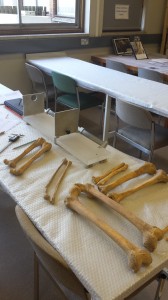The retrieval-practice effect is a well-established phenomenon whereby after an initial study period, testing is more effective than re-studying the material for long-term retention (Roediger & Korpicke, 2006). This finding has been replicated sporadically for more than a hundred years, using a variety of different materials and across different contexts.
For my UROP placement, I have been investigating an area of research which remains relatively understudied; whether the retrieval-practice effect can be generalised to procedural learning; that is, the long-term retention of skills and specifically, problem-solving skills.
In the project, I have used worked examples of a Physics formula, Ohm’s Law, for my study material. Participants were required to learn a simple formula and then apply it to novel problems. Participants were placed in one of two conditions; a study-only condition, where participants are presented with worked examples and told to study them and a retrieval-practice condition, where participants are required to solve the problems themselves.
The effect of retrieval practice was examined upon two learning outcomes; exact memory for the content of the examples and performance on new examples. The findings of the two have been compared.
This comparison will allow us to establish whether participants are better at remembering the specific problems that they have encountered before, in terms of surface features, as opposed to the procedural knowledge of how to solve the problem.
We hypothesise that participants in a testing (retrieval-practice) condition will not perform significantly better than their counterparts in a study-only condition when tested on their accuracy solving novel problems of the same problem type. In addition we predict that participants will demonstrate superior recognition for problems which they had previously encountered when presented alongside new problems.
A superior ability to remember a particular problem encountered before rather than the procedural knowledge of how to solve a novel problem may indicate that the retrieval-practice effect does not apply to procedural learning.
This, of course, will have implications within educational practice, particularly applying to mathematics and science education.
Throughout this project, I have worked alongside Dr. Philip Beaman, who is practiced in the field of cognitive psychology and memory. He initially gave me some previous research in this domain to study (Van Gog and Kester, 2012). I took the initial findings from this research, developed the methodology used and considered the potential avenues for future research suggested to supplement the research findings.
I developed new material and produced a new experimental design, recruited participants and tested them myself. It was exciting to see my created experiment put into practice and to see the results it generated. At times it was frustrating; the initial material I developed caused a ceiling effect, whereby the tasks were too easy, so everyone did well. This would not allow me to establish any differences between conditions. So I had to change the material that I used.
Overall I have found this experience hugely insightful and inspiring and it has definitely given me the buzz for research.
Lastly I would like to thank everyone involved in the organization of UROP for this opportunity.
By Anna-Louise Smeed






